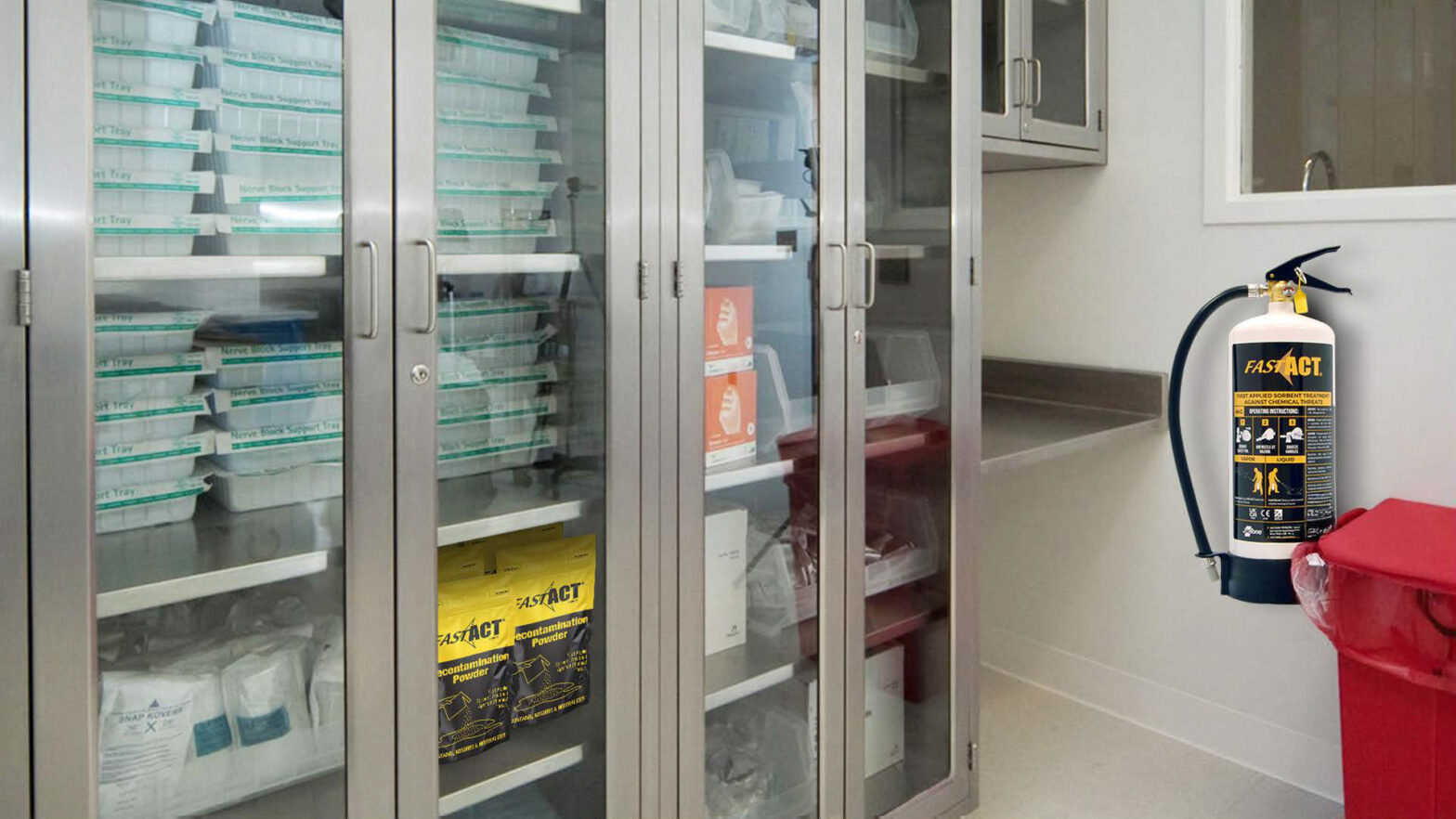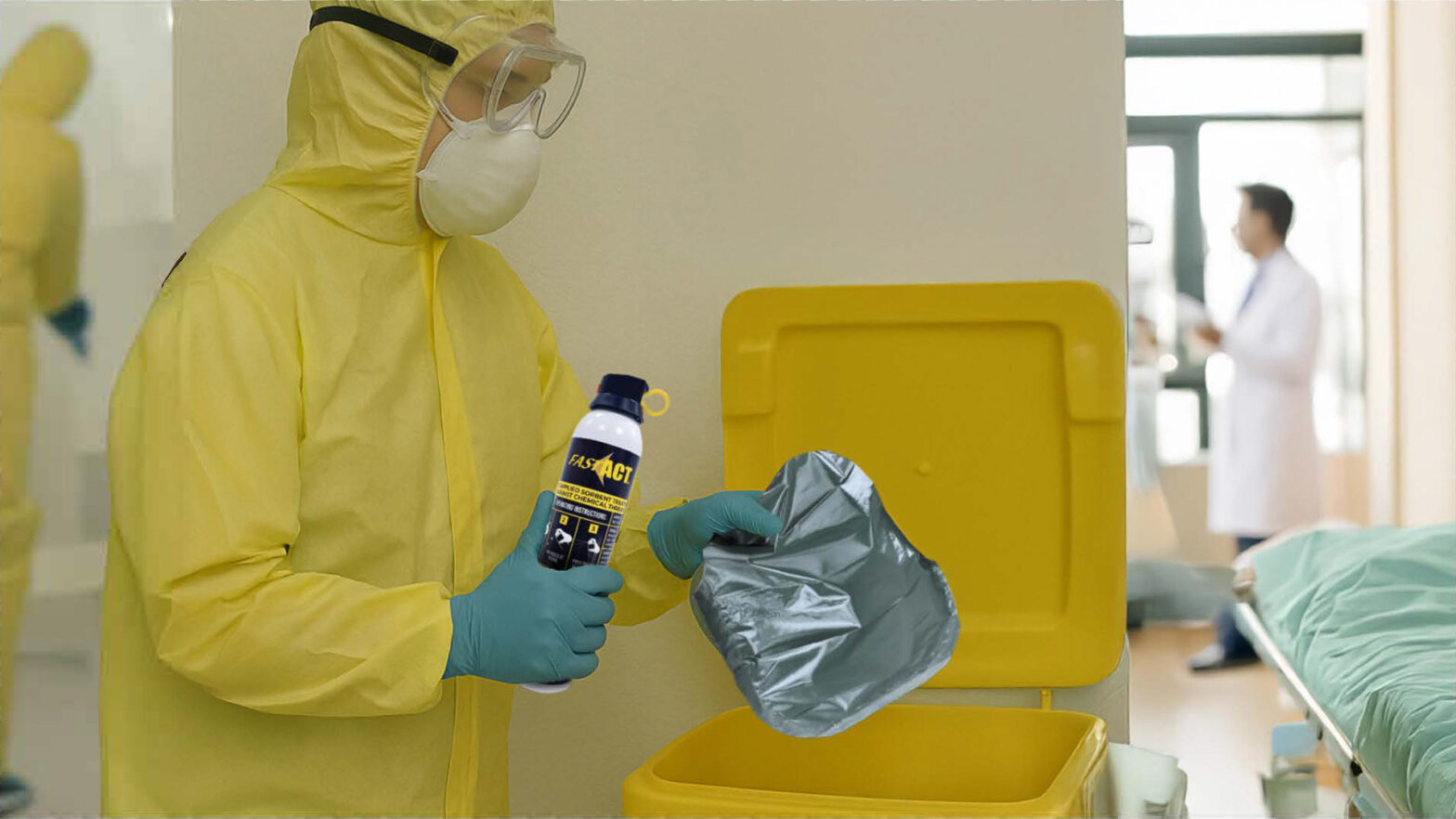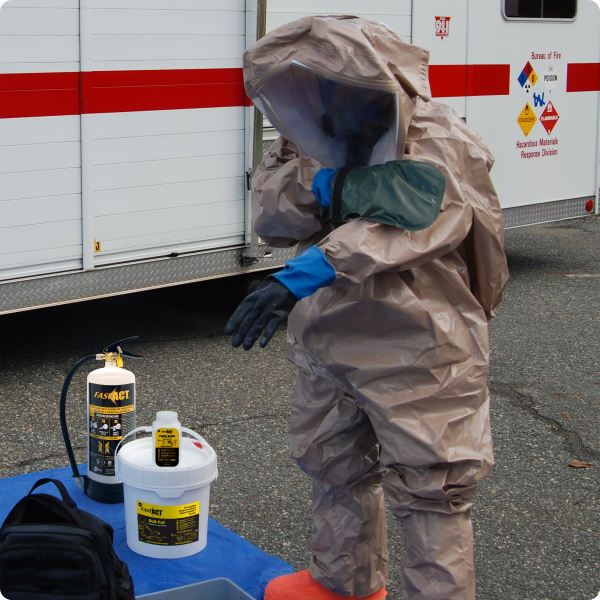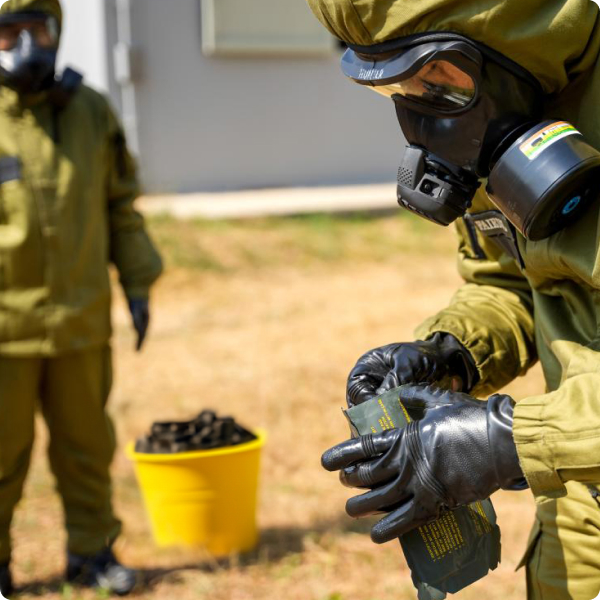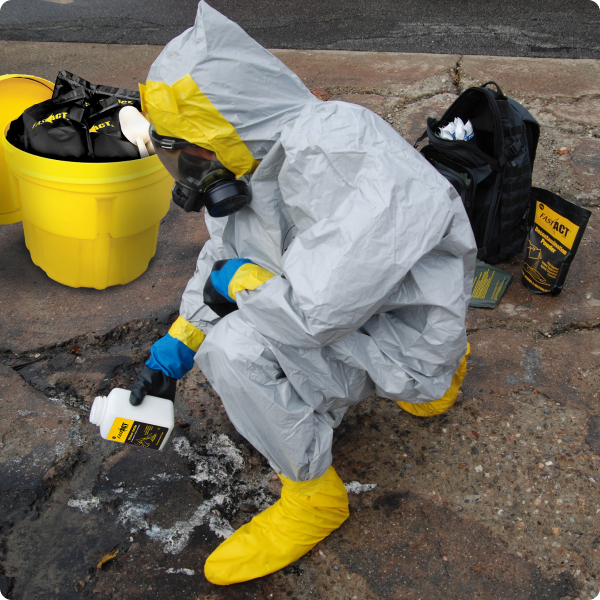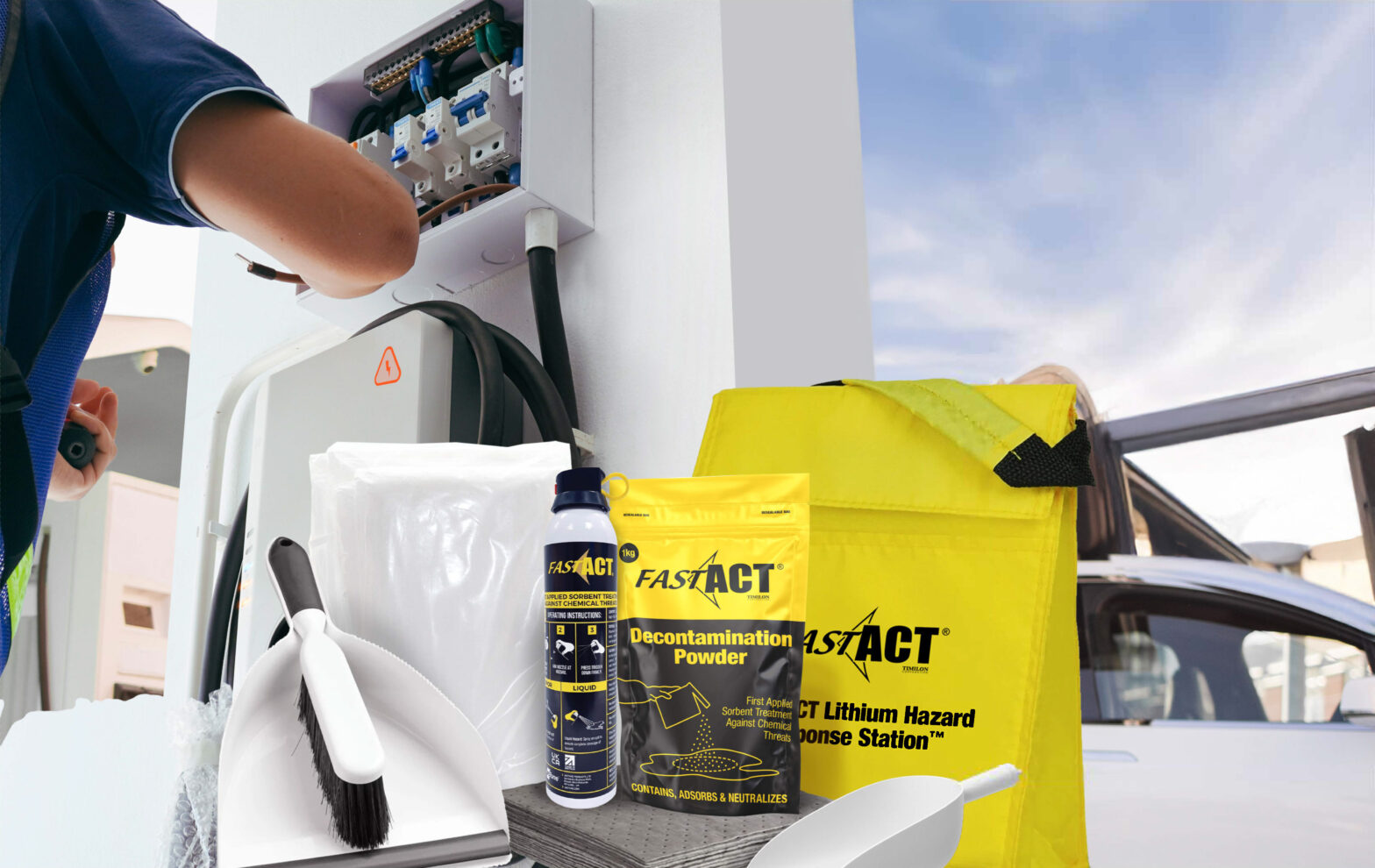This guide breaks down cyclosarin’s chemical properties, health effects, and environmental behavior, while also showing how FAST-ACT decontamination solutions protect communities against these toxic chemicals.
Category: Decontamination Insights
Hospital Decontamination Without Compromise: Protecting Patients, Staff, and Equipment
This post concludes our hospital decontamination blog series, following Part 1: Rethinking Hospital Decontamination and Part 2: Inside the Protocol: A Hospital SOP for Dry Chemical Decontamination.
Inside the Protocol: A Hospital SOP for Dry Chemical Decontamination
In the face of chemical incidents, hospitals are often the first point of contact—before any decontamination protocols have been applied. For regional emergency department staff, this poses immediate risks: volatile chemicals, systemic toxicity, and potential secondary contamination that could impact both patients and staff. A fast, reliable, and adaptable protocol becomes essential.
Not All Dry Decontamination Is Created Equal: What to Look for in a Real Solution
Not all dry decontamination tools perform the same. Some are built to absorb or contain, while others are designed to neutralize the threat entirely. If your team is deciding between dry options, here’s what to know before making the call.
Rethinking Hospital Decontamination: Why Dry Decon Belongs in Your Emergency Plan
In the event of a chemical incident or mass casualty event, hospitals must act quickly to protect patients, staff, and infrastructure. Traditional water-based technical decontamination has long been a standard protocol, but it brings limitations—especially during high-pressure scenarios where rapid, scalable response is critical.
Global Events, Global Risks: Why the 2026 World Cup Demands More Than Traditional Security
The FIFA World Cup is more than a sporting event—it’s a global spectacle drawing millions of fans into high-density, high-energy environments. While this celebration of international unity captivates the world, it also introduces real and growing risks: from crowd control challenges to the silent but severe threat of chemical, biological, radiological, nuclear, and explosive (CBRNE)… Continue reading Global Events, Global Risks: Why the 2026 World Cup Demands More Than Traditional Security
Chloropicrin: Understanding the Threat and How to Respond Safely with FAST-ACT Dry Decontamination
Learn what chloropicrin is, why it’s banned, the health risks of exposure, and how to respond safely with effective dry decontamination tools like FAST-ACT.
Dry vs. Wet Decontamination: Which Is Right for the Situation?
When hazardous materials pose an immediate threat, the method of decontamination you choose can determine the outcome. First responders, hazmat teams, and military units must understand the difference between wet and dry decontamination to deploy the right tools—fast. This guide breaks down both approaches and highlights why FAST-ACT’s dry decon solutions are trusted in the… Continue reading Dry vs. Wet Decontamination: Which Is Right for the Situation?
Fourth of July Hazards and Concerns for First Responders
The Fourth of July is one of the most celebrated holidays in the United States, marked by fireworks, barbecues, and large public gatherings. But for first responders, it also brings a high-risk environment with potential threats ranging from chemical exposures to crowd-related hazards.
Managing EV Battery Spills: Why a Dry Decontamination Solution is Critical
As electric vehicle (EV) adoption accelerates worldwide, so does the risk of lithium-ion battery incidents. From manufacturing floors to public roads, the potential for thermal runaway, vapor release, and chemical spills tied to these batteries presents a growing challenge for first responders, industrial safety teams, and emergency planners. With the increase in EV battery incidents,… Continue reading Managing EV Battery Spills: Why a Dry Decontamination Solution is Critical


